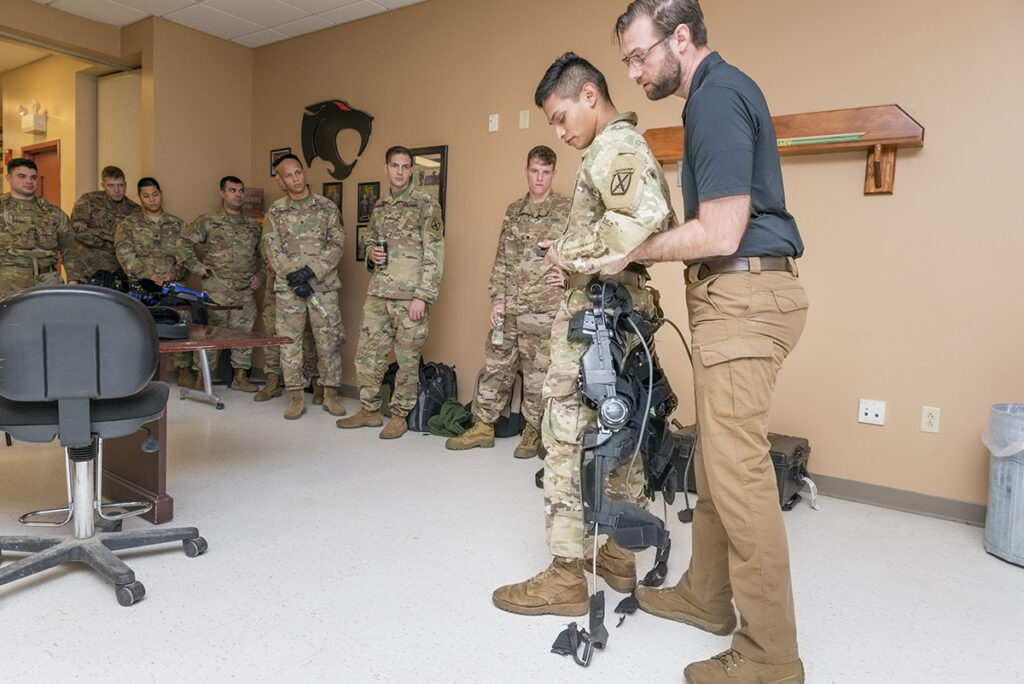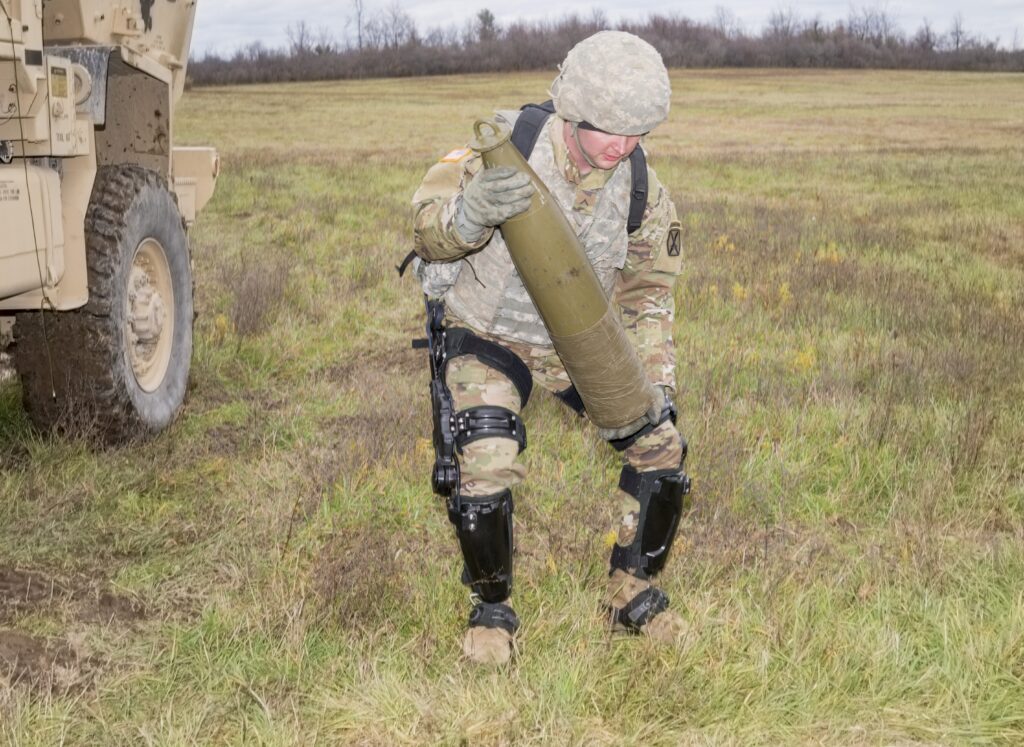WASHINGTON: Army Futures Command is drafting a formal requirement for a military exoskeleton and will seek feedback from manufacturers at a November industry day. The Army’s top priority, officials told me: rapidly prototyping a system that helps the wearer “move faster, travel further, and carry heavier loads” – without breaking down in the heat of battle.
“Reliability is a huge issue that needs to be resolved,” said Ted Maciuba, deputy director of robotic requirements for Futures Command.
Now, don’t expect a full-body bulletproof suit that can fly and access huge databases out of science fiction. “We are not going after the Starship Troopers/Iron Man system right off the bat,” said Rich Cofer, a former soldier who’s now the Army’s lead “capabilities developer” on the exoskeleton project. “We’re not going to jump right in and expect Tony Stark… Expectation management is key.”
(That’s a stark contrast to Special Operations Command’s highly publicized TALOS program, which explicitly compared itself to Iron Man but produced nothing of the kind).

A soldier tries an experimental lower-body exoskeleton at Fort Drum, NY
So instead of Iron Man, think Iron Leg. In a “soldier touchpoint” last December at Fort Drum, NY, Army soldiers from more than two dozen Military Occupational Specialties — ranging from infantry to supply — tried out various types of “lower-body exoskeletons,” including the Lockheed Martin ONYX that our own Paul McLeary tries out in this video. In essence, these are motorized knee braces and other wearable reinforcements for the legs that lighten the load on overburdened soldiers as they march for hours with heavy packs, manhandle artillery shells and such. The goal isn’t to give the wearer superpowers, but to reduce fatigue and risk of injury.
During the Fort Drum trials, “there were significant increases in the effectiveness of soldiers,” Maciuba told me. “The soldiers were able to do more with the exoskeleton than they could without.”
That said, “we learned [that] there needs to be enough reliability engineered into our systems so that there is a very high probability they will not fail in use,” Maciuba continued. “It’s one thing to be wearing a boot whose sole flips off. You can always take some 100-mile-an-hour tape and tape that back on your foot. It’s another thing to be wearing an exoskeleton” that requires specialized training and tools to fix. So reliability will be a high priority when the Army speaks to potential vendors in mid-November.
By that point, Maciuba & co. expect to have a draft Abbreviated Capabilities Development Document for industry to review and offer comment on. (Army Futures Command officially gave them the go-ahead to write the ACDD on Aug. 14th; the exoskeleton project falls under the command’s Soldier Lethality team, with input from PEO-Soldier acquisition officials, Natick Soldier Systems Center researchers, and capability managers for infantry, armored, and Stryker units). While unclassified, the document will be considered sensitive and only released to qualified contractors.

A soldier wearing a partial exoskeleton handles a shell.
While the ACDD is formally considered a requirements document, Maciuba told me, it’s not going to set rigid technical specs as would a traditional Army requirement. The technology is advancing way too fast to get that detailed at this early stage. Instead, he said, it will outline “desirable characteristics” but leave industry plenty of leeway to innovate on specific ways to achieve them – and the Army is open to revising those desires based on what industry says is actually achievable.
“We want industry to grade our work,” Maciuba said. The industry day – which will be held online unless there’s some miraculous breakthrough with COVID-19 – will include both a general session open to all contractors and one-on-one meetings with specific contractors so they can discuss their technology without competitors listening. Afterwards, Maciuba, Cofer, & co. will compile the feedback from all the companies, revise the ACDD, and send it to Army leaders for approval.
The final Abbreviated Capabilities Development Document should be out by the end of 2021, Cofer estimated. The next step? Use a streamlined acquisition process known as Section 804, intended to field a working prototype within five years – that is, Maciuba cautioned, if the Army can find the funding.
Move over FARA: General Atomics pitching new Gray Eagle version for armed scout mission
General Atomics will also showcase its Mojave demonstrator for the first time during the Army Aviation Association of America conference in Denver, a company spokesman said.


























